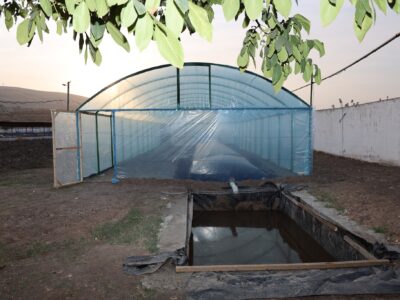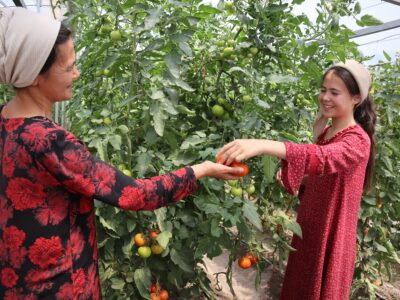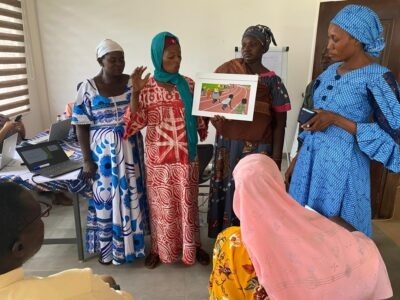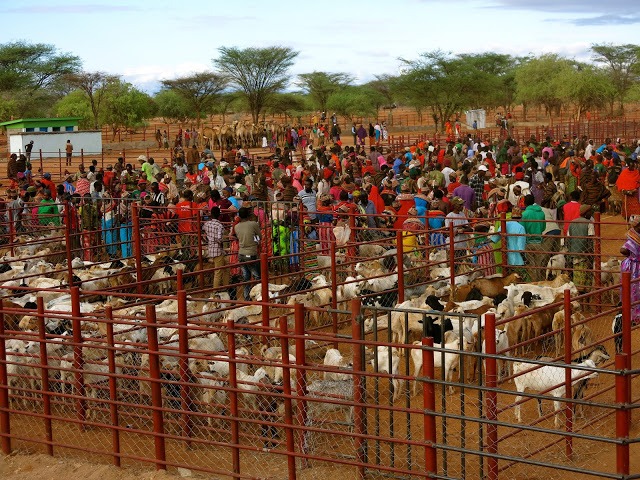
A Case of Emergency Cash Transfer
It is early morning. Learpanai opens his shop, located at the heart of Kisima village in Samburu County, Kenya, where he is ready to serve his customers who will soon start buying nutritious food and other household items. When Learpanai is not at his shop, he is at Kisima livestock market — within walking distance from his shop — where he runs his second business selling goats.
Learpanai’s life today is a contrast to what it was previously. As a young boy growing up in the arid and semi-arid lands of Kenya, his parents relied on livestock as their main income source. Each season they grappled with chronic disruptions caused by environmental shocks such as droughts and seasonal floods that would lead to loss of pasture and death of livestock. Learpanai’s situation grew worse as he entered adulthood when, as a father of three, he was jobless with no skills to earn a living. He faced extreme poverty that left him unable to provide food and meet the basic needs of his young family.
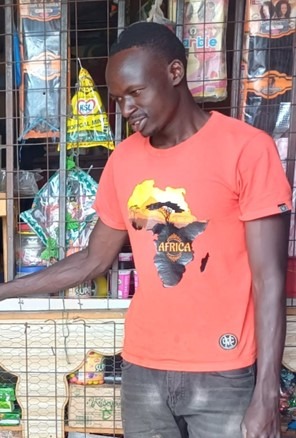
Hunger and Starvation Following a Four-Year Drought
Following the devastating drought in 2021 and the subsequent dry weather conditions of 2023, Learpanai was among over 100,000 people in Samburu County who went hungry and nearly lost all of their livestock, with the few remaining herds driven to far-away places in search of pasture. Those who remained, mostly women and children, had neither food nor water for their daily use, leading to cases of acute malnutrition and hygiene-related diseases. Every evening, Learpanai and his wife would quietly sit together, worried that they and their children would starve to death.
Emergency Cash Transfer Shines a Glimmer of Hope
At the brink of despair, Learpanai’s family was one of over 10,000 families from Samburu County to receive lifesaving emergency cash transfers and other support, immediately turning around their poverty conditions. Like other families that received cash, Learpanai used the money to buy food, which enabled him and his family to survive the four-year drought. The cash and related support were provided by a wide range of partners including USAID Nawiri, ACTED/PACIDA, the World Food Program (WFP), the National Drought Management Authority, Kenya Red Cross, Samburu County government, and the Feed the Future Livestock Market Systems Activity (LMS), implemented by ACDI/VOCA.
Coordinating Support Through Joint Work Planning
At first, partners met coordination challenges including duplication of efforts and inequitable distribution of support leading to some families receiving benefits from more than one partner.
To address these challenges, partners leveraged resources and associated support under the USAID Partnership for Resilience and Economic Growth (PREG) and the Emergency Cash Transfer Program. USAID PREG is a coordination platform that unites multiple USAID implementing partners, sub and national government actors, Kenyan institutions, and resiliency and development practitioners from other donors, and the partners themselves.
To achieve this, the PREG partners sequenced, layered, and integrated (SLI) their efforts by preparing joint work plans, organizing, developing, and coordinating the Cash Transfer Program, and using learnings to foster effective implementation. Each partner was allocated a geographic area of operation where they established a database of all households and recruitment criteria for the beneficiaries. The partners then developed a central platform through which they disbursed funds amounting to approximately USD 2,377,716.79 to individual beneficiaries’ phones. Out of this, ACTED/PACIDA provided up to USD 767,770.38 that was disbursed to 3,295 households in amounts of USD 50.76 for four cycles. USAID Nawiri disbursed up to USD 858,548.02 which benefited 2,557 households while WFP disbursed USD 760,500.00
As a result of joint work planning and coordination, the partners eliminated duplication of efforts, achieved complementarity and synergy, improved efficiency in their resource usage, and avoided redundancy of the program’s impact.
Other Support
In addition to cash transfers, the community also received support from the PREG partners, including USAID’s LMS Activity which trained livestock farmers on better ways to conduct livestock businesses. Learpanai was among those who benefitted from the training and started a livestock trade business in which he buys and sells goats at the Kisima livestock market, complementing the income he gets from his shop. He uses this income to buy nutritious food for his family and to support the cost of education for his children who he has enrolled in school.
Learpanai’s success story is one of more than 310,000 stories of people from the most vulnerable households in the drought-stricken Samburu County that received direct and immediate support from the joint efforts of partners. The support not only sustained the families during the drought but also increased their resilience, enabling them to bounce back better from the shock. Learpanai is committed to ensuring that he and his family are free from the cycle of poverty that he’s known too well since childhood.
Learn more about the Activity.
Learn more about our work in Kenya.

